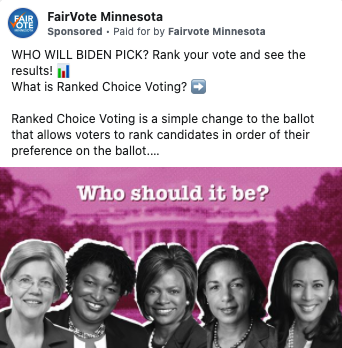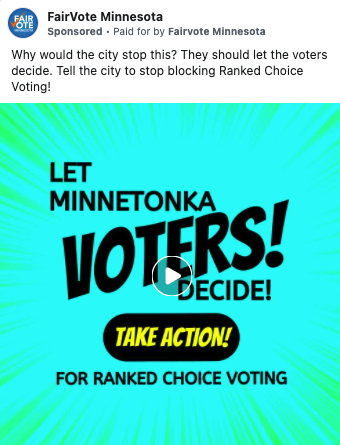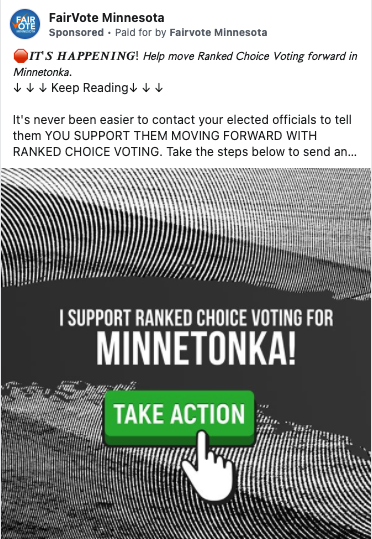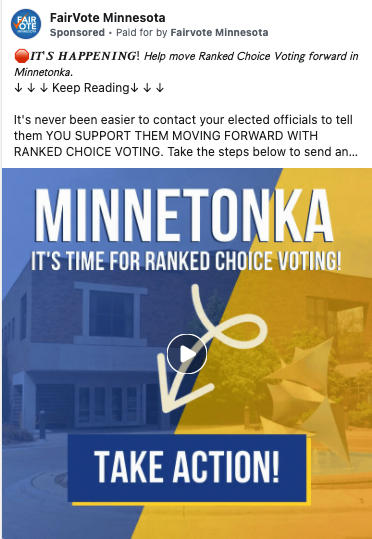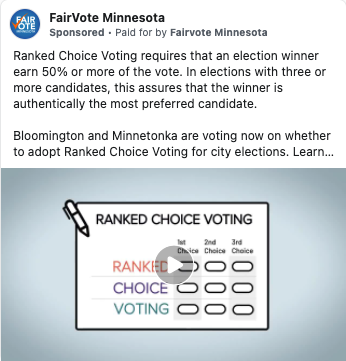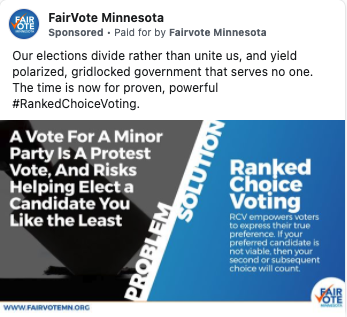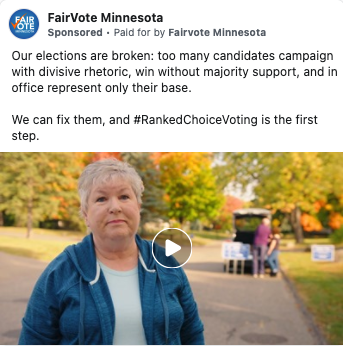Case Study: FairVote Minnesota | Digital Marketing
How United Strategies helped FairVote Minnesota pass Ranked Choice Voting ballot measures in two Minnesota cities
A Multi-faceted approach
Throughout 2020, United Strategies used digital marketing and outreach to help FairVote Minnesota secure and ultimately pass ballot measures for Ranked Choice Voting in Bloomington and Minnetonka, Minnesota. United Strategies’ digital marketing approach consisted of multi-channel ad campaigns utilizing list-building, persuasion, and advocacy strategies. This multi-faceted approach helped spread FairVote Minnesota’s message, appealed to voters through personal interests, and turned voters into advocates for their cause.
Channels
Facebook
Instagram
Search
Display
Results
6,100+ email list sign-ups at less than $4 each
1,950 emails sent to city council members at less than $5 per email
Advocacy campaign reached more than the total number of eligible voters in each city
City Council members said it was the most aggressive campaign they’ve ever seen
List-Building
Ongoing list-building campaigns used current events and common interests to educate voters about how Ranked Choice Voting works and differs from our current ballot system, and to grow FairVote Minnesota’s email database. Overall, the campaign resulted in over 6,000 signups.
Advocacy
In addition to the ongoing campaigns, United Strategies ran an advocacy campaign focused on getting the Minnetonka City Council to add a Ranked Choice Voting measure to the November ballot. The Facebook ad campaign called for voters to contact their city council representatives and provided an easy way to send an email. The campaign resulted in thousands of emails sent to City Council members, who said it was the most aggressive campaigns they have seen.
Persuasion
The final element was a persuasion campaign focused on educating as many voters as possible in each city about Ranked Choice Voting and encouraging them to vote yes on their respective ballot measures. The total campaign reach exceeded the number of eligible voters in each city and both ballot measures ultimately passed.




